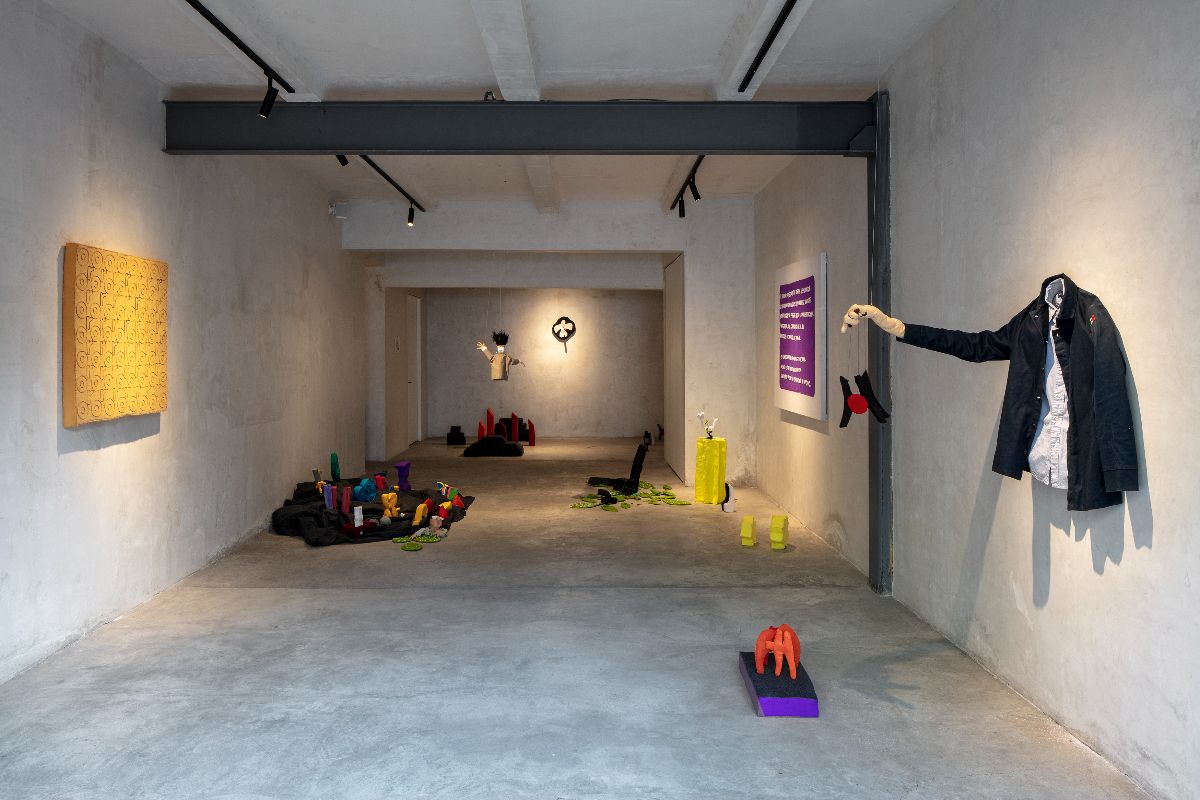
Wendy Cabrera Rubio
Crítica a la pirámide
Exhibition
-> Apr 15 2023 – May 27 2023
N.A.S.A.L.
N.A.S.A.L. presents the solo show Crítica a la pirámide by the Mexican artist Wendy Cabrera Rubio.
This exhibition contains a premonitory dream, one that perhaps someone had in the 1960s after Mexico City was named host city for the Games of the 19th Olympiad. Like any dream, it is populated by broken things: words running in circles, stiff faces, improbable rooms, interrupted conversations. However, since it is a dream of vaticination, all of this pedagree eventually adds up to reveal what is actually being dreamed, which is of course monstrous. In this true dream, three superimposed kingdoms rise up. The first of them shines until it hurts the eyes and names itself a prosperous utopia to be consecrated when the Games are held. The second, gloomy, consists of the human machinery of modernization that builds and sustains this supposed bonanza. The third is called Tlatelolco.
This exhibition also contains two characters dreaming of each other: a court architect and a foreign artist. The first, Pedro Ramírez Vázquez, is a dignitary who serves the homeland, sometimes together with the government, sometimes with Big Capital. He works not only in the prose of schools, markets or stadiums but also in poetry: within the forest of the future host city built beautiful altars to the modern state using the pristine forms demanded by modernity: a descending spiral for the Gallery of History, a cell for the Museum of Modern Art, the quadrangle of a ceremonial center for the Museum of Anthropology. The second, Mathias Goeritz, burst histrionically into the country in the middle of the century as a sort of conjurer of the new: he mounted exhibitions, he set up networks, he established a seductive dialectic pedagogy, he planted a spiritual and emotional proposal in the face of the apocalyptic hustle and bustle of contemporary art.
The architect and the artificer: who is chasing whom? Both are two faces of an internationalist monumentality, conspirator in the Cold War. They provide the nation with contemporary versions of the tumulus and the pyramid. In their works, everything must be demonstrated ad nauseam. With a single abstract - and gigantic - stroke, the direction of millions of beings is to be expressed. The ultimate purpose of this, with its secular cathedrals and its sublimated scenographies, is undoubtedly theological. There is a form of mysticism, for example, in the Cultural Olympiad of '68, which perhaps aspired to be the total work of art that Goeritz proclaimed.
Finally, this exhibition contains a dream within a dream. It is and is not the one Antonio Ruiz El Corcito imagined for La Malinche, in this case on the sheets of a luxurious hotel inaugurated in 1968, weeks before the massacre and the Games. The violence towards a woman, the artist, as an ancient terrible metaphor of the "possession" of "the national", potentiates the reflection on the numerous violences of these suffering modernities; specifically the architectural and urban violence that controls the bodies. And through the elegant lattices of the hotel, today of aged aesthetics, we can glimpse the historical nightmare that we have to dream over and over again (because every dream is, by force, incomplete) in the hope that we can ever sleep.
— Daniel Escoto